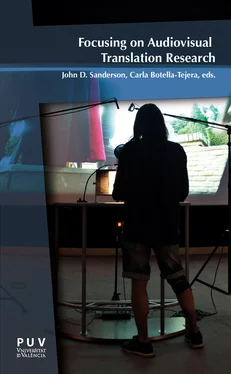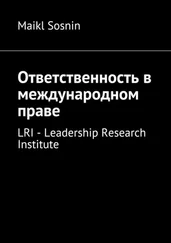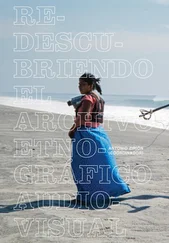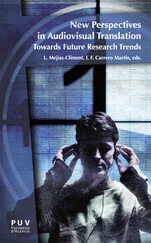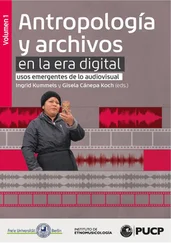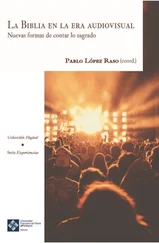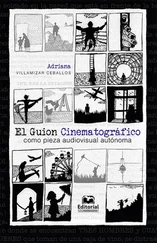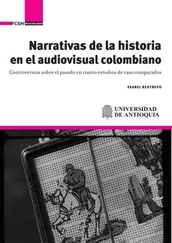AAVV - Focusing on Audiovisual Translation Research
Здесь есть возможность читать онлайн «AAVV - Focusing on Audiovisual Translation Research» — ознакомительный отрывок электронной книги совершенно бесплатно, а после прочтения отрывка купить полную версию. В некоторых случаях можно слушать аудио, скачать через торрент в формате fb2 и присутствует краткое содержание. Жанр: unrecognised, на английском языке. Описание произведения, (предисловие) а так же отзывы посетителей доступны на портале библиотеки ЛибКат.
- Название:Focusing on Audiovisual Translation Research
- Автор:
- Жанр:
- Год:неизвестен
- ISBN:нет данных
- Рейтинг книги:4 / 5. Голосов: 1
-
Избранное:Добавить в избранное
- Отзывы:
-
Ваша оценка:
- 80
- 1
- 2
- 3
- 4
- 5
Focusing on Audiovisual Translation Research: краткое содержание, описание и аннотация
Предлагаем к чтению аннотацию, описание, краткое содержание или предисловие (зависит от того, что написал сам автор книги «Focusing on Audiovisual Translation Research»). Если вы не нашли необходимую информацию о книге — напишите в комментариях, мы постараемся отыскать её.
Focusing on Audiovisual Translation Research — читать онлайн ознакомительный отрывок
Ниже представлен текст книги, разбитый по страницам. Система сохранения места последней прочитанной страницы, позволяет с удобством читать онлайн бесплатно книгу «Focusing on Audiovisual Translation Research», без необходимости каждый раз заново искать на чём Вы остановились. Поставьте закладку, и сможете в любой момент перейти на страницу, на которой закончили чтение.
Интервал:
Закладка:
In a nutshell, this research involved the collection of quantitative and qualitative data first of all, and then finally triangulating the results to corroborate a number of findings that justify the use of active subtitling in the L2 class, and enabling us to claim that this practice does indeed bring positive results as far as this particular population is concerned.
5 Conclusions
The present experiment has attempted to validate the potential of active subtitling to improve written English in secondary schools. It was conducted in a secondary school in Madrid on a population of teenage native speakers of Spanish, and made use of a concrete methodology based on a multi-strategy design.
Judging by the evidence gleaned during the experiment and then analysed and discussed, there were a number of positive results. The experimental group showed some improvement in their written English skills. The quantitative and qualitative data showed a positive rapport between some of the results and the students’ views. Focusing on what they themselves thought, 81.3% said that their L2 written skills had improved thanks to the experiment. In addition, they considered Amara a user-friendly platform that they enjoyed using while subtitling. Some promising results can be inferred from the quantitative data inasmuch as the experimental group average showed an improvement in terms of their written English by +0.68, with the support of this AVT tool, and the control group scored an average of +0.8. Thus, the research questions were addressed by all the data collected.
As far as social subtitling is concerned, the students gained an awareness concerning the importance of providing subtitles to online videos for the benefit of other users. This altruistic practice – mainly led by fansubbers or amateur subtitlers – is growing day by day and, although some of the subtitles produced can be of a high quality, the most important aspect is that many users who are unfamiliar with other languages have access to the myriad of audio-visual products available online.
An important number of limitations and weaknesses also came to light during the experiment. (1) The population was small so the results obtained should be treated as a case study. (2) The number of subtitled videos was very limited; this could relate to the fact that there was no possibility of a reward in the participants’ final course marks. (3) The responses obtained from the post-study questionnaire show that a significant number of students withdrew given that, out of 27 students, only 16 filled in the final survey. (4) The choice of language combinations available to the students at the outset of the study meant that they subtitled from English to Spanish (and not vice versa) and this was at odds with the purpose of the project, which aimed to improve the participants’ written English. (5) It was not unusual for some technical computing issues to take place especially when using laptops and involving the Internet connection. This caused the participants to miss out on some of the practice in the classroom.
As research involves experimenting, and experiments can provide researchers with positive or negative results, the current goal here was to learn from the weaknesses of this project and, thereby, to elaborate a good practice guide for any teacher, lecturer or researcher interested in conducting similar projects with teenagers.
5.1. GOOD PRACTICE GUIDE
A series of recommendations with the aim of avoiding some of the most significant flaws in this project is as follows:
• The students must be clearly informed of the goals of the project in terms of L2 skills improvement, tools, subtitling platform(s) and software, etc.
• Provide a time-line to suit the participants’ timetables and availability.
• Provide the students with the videos they have to subtitle so that less time is spent searching for diverse types of video.
• A list of instructions must be presented concerning the languages involved in the subtitling and the direction required: L2-L1, L1-L2, L2-L2, and the like, in accordance with the purposes of the project.
• It is advisable to include a large population so that the results can be extended to other individuals.
• It is important to meet deadlines so that all tasks can be completed.
• Participants should receive some quantitative reward for participating in order to avoid a high dropout rate for the project, for example, adding 1 extra mark to their final mark after each term.
• The activities and tasks should be motivating enough for participants to work actively, and learning can be directly connected with enjoyment, thus avoiding a high dropout rate.
All in all, it is hoped that the present chapter will add some insights to the literature concerning subtitling as a didactic tool for the L2 class. The good practice guide can also be used to highlight elements of use to some teachers/researchers, considering that as a case study, every group has its own characteristics and not all recommendations work with all types of student. More research into this type of AVT methodology needs to be conducted, considering that the majority of teenagers in Spain are currently unable to use the English language properly, and given the importance of the use of foreign languages in all walks of life.
References
Baños, Rocío and Stavroula Sokoli (2015). “Learning foreign languages with ClipFlair: Using captioning and revoicing activities to increase students’ motivation and engagement”. In Borth-wick, Kate, Erika Corradini and Alison Dickens (eds.). 10 Years of the LLAS elearning Symposium: Case Studies in Good Practice . Dublin: Research-publishing.net.
Borghetti, Claudia (2011). “Intercultural learning through subtitling: the cultural studies approach”. In Incalcaterra McLoughlin, Laura, Marie Biscio and Máire Áine Ní Mhainnín (eds.). Audiovisual Translation Subtitles and Subtitling. Theory and Practice . Bern: Peter Lang, 1-30.
Borghetti, Claudia and Jennifer Lertola (2014). “Interlingual subtitling for intercultural language education: a case study”. Language and Intercultural Communication 14(4), 423-440.
Borrás, Isabel and Robert C. Lafayette (1994). “Effects of multimedia courseware subtitling on the speaking performance of college students of French”. The Modern Language Journal 78(1), 61-75.
Creswell, John W. (2003). Research Design: Qualitative, Quantitative, and Mixed Methods Approaches (2nd edn) . Thousand Oaks, CA: Sage.
Danan, Martine (1992). “Reversed subtitling and dual coding theory: new directions for foreign language instruction”. Language Learning 42(4), 497-527.
Danan, Martine (2004). “Captioning and subtitling: undervalued language learning strategies”. Meta: journal des traducteurs / Meta: Translators’ Journal 49(1), 67-77.
Danan, Martine (2015). “Subtitling as a language learning tool: past findings, current applications, and future paths”. In Gambier, Yves, Annamaria Caimi and Cristina Mariotti (eds.). Subtitles and Language Learning. Principles, Strategies and Practical Experiences . Bern: Peter Lang, 41-61.
Denzin, Norman K. (1988). The Research Act: A Theoretical Introduction to Sociological Methods (3rd edn) . Englewood Cliffs, NJ: Prentice Hall.
Díaz-Cintas, Jorge (1995). “El subtitulado como técnica docente”. Vida hispánica 12, 10-14.
Díaz-Cintas, Jorge (2001). La traducción audiovisual: el subtitulado . Salamanca: Ediciones Almar.
Díaz-Cintas, Jorge (2012). “Los subtítulos y la subtitulación en la clase de lengua extranjera”. Abehache 2(3), 95-114. < http://revistaabehache.com.br/index.php/abehache/article/view/78/77> (Accessed 5 September, 2017).
Читать дальшеИнтервал:
Закладка:
Похожие книги на «Focusing on Audiovisual Translation Research»
Представляем Вашему вниманию похожие книги на «Focusing on Audiovisual Translation Research» списком для выбора. Мы отобрали схожую по названию и смыслу литературу в надежде предоставить читателям больше вариантов отыскать новые, интересные, ещё непрочитанные произведения.
Обсуждение, отзывы о книге «Focusing on Audiovisual Translation Research» и просто собственные мнения читателей. Оставьте ваши комментарии, напишите, что Вы думаете о произведении, его смысле или главных героях. Укажите что конкретно понравилось, а что нет, и почему Вы так считаете.
